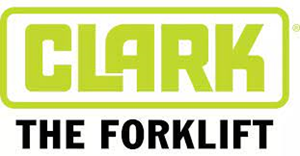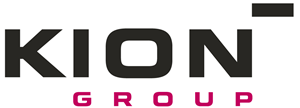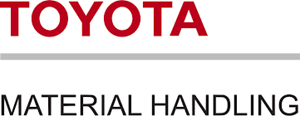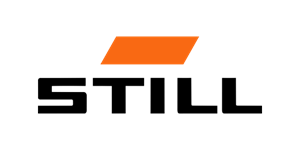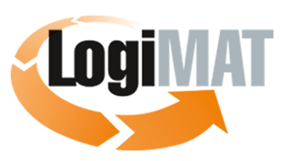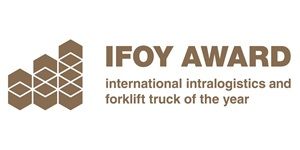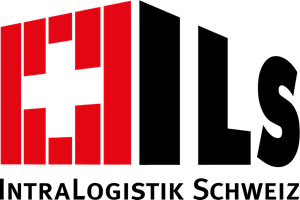WWW.LOGISTICSINNOVATION.ORG

The online magazine for Switzerland, the EU and the rest of the world

The fire is left without air
October 8, 2025
The fire protection specialists of the Wagner Group have been honored with the "GIT Safety Award 2026" for their "OxyReduct F-Line." The system expands the OxyReduct process with H2- based fuel cell technology, which simultaneously ensures emission-free energy supply.

Temperature-controlled at the motorway junction
October 7, 2025
Movianto, a logistics service provider specializing in pharmaceuticals and healthcare, is setting up a new cold storage facility in Wiesloch-Walldorf this month. A photovoltaic system there produces approximately 3,100 MWh per year, more electricity than the site consumes.

Fusion reactor in creep mode
October 7, 2025
Despite all the political turmoil currently shaking the world, work on the ITER fusion reactor, in which countless nations are involved, continues – much like on the ISS. Recently, another of the 15-meter-high segments for the future plasma chamber was delivered by heavy-duty transport.

Nonstop strapping
October 6, 2025
Mosca offers a comprehensive portfolio of integrated end-of-line systems for transport packaging, strapping machines, stretch wrappers, and associated consumables. Strapping made from materials such as PP and PET is produced with increasing recycled content.

Dynamic open-plan area
October 6, 2025
Relocations often involve considerable effort. Furniture needs to be transported, boxes packed, and unwanted items disposed of. The company " Optimal Umzug " from Lachen, Canton of Schwyz, offers services tailored to the greater Zurich area.

Optio L-Series updated
October 6, 2025
Developed with the user in mind, the completely redesigned generation of low-level order pickers in the Optio L series from TMHE sets new standards. Increased platform lifting heights, low entry, and versatile model variants for loads up to 2.5 t make these devices highly sought-after helpers.
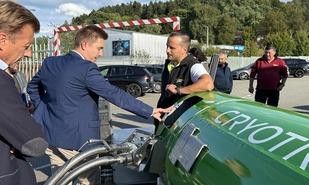
Cold chain in transition: Ambitious goals
October 2, 2025
Temperature-controlled logistics is facing an energy revolution: battery-electric trucks, long-range hydrogen vehicles, and cryogenic cooling with nitrogen are transforming the industry. Enough "material" for the SVTL to discuss future processes and alternatives at Galliker in Altishofen.
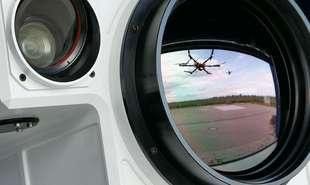
DLR expands drone defense
October 2, 2025
While Russian drones have long been surveying German bases and critical infrastructures as potential targets for their “ asymmetric warfare ” a project called CUSTODIAN (Counter-UAS Technologies for Detection, Interception and Neutralization) is now slowly gaining momentum at the DLR.
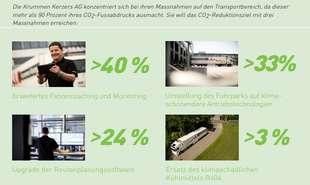
ASTAG and GS1 to go green together
October 1, 2025
The Swiss Commercial Vehicle Association and GS1 Switzerland are merging their "Lean & Green" and "We go green!" initiatives. Both ASTAG and GS1 are embracing sustainability as a triad of economy, society, and the environment.
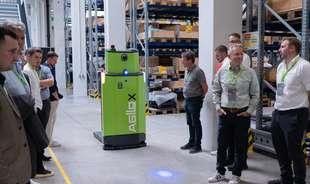
Interoperability proven
October 1, 2025
At an " Automation Day " hosted by Agilox, insights into the current status and future direction of the robotics provider were provided, rounded off by workflows that – modeled on real practical processes – demonstrated interoperability with the AMRs together with a Fanuc robot arm and a Palomat.
Energy flows and material flows in transition
WAGNER Switzerland AG
Energy flows and material flows in transition
April 28, 2023
An estimated 60% of all foodstuffs transported worldwide, as well as pharmaceuticals and other temperature-sensitive products, require refrigeration at at least one point in the supply chain. Energy consumption is correspondingly high, and reducing it is of paramount importance in temperature-controlled logistics. A ZHAW project is exploring opportunities and possibilities.
In recent years, numerous measures have been taken in terms of planning, logistics and machinery to reduce energy consumption and CO2 emissions.
Thomas Hanhart, a logistics and industrial construction expert at the ie-group engineers, knows from experience that there is no one-size-fits-all solution that applies to all planning projects. "Fundamentally," he says, "the requirements for a deep-freeze warehouse must be defined together with the customer." Sustainability is a high priority for many customers. A completely hermetically sealed outer shell is essential. When designing the interior, particular attention must be paid to the door technology.
Photo: Frigoconsult
The structural situation of the deep-freeze warehouse must be considered from the outset. Docking points and ramps should not be positioned on the sunny side, says Beat Schmutz, Managing Director of SSP Kälteplaner. The operational behavior of the employees, the people who work there, their "door discipline" when entering and exiting the temperature-controlled areas, and, in this context, the presence of high-speed doors should not be underestimated. "It depends on the logistics movements, and of course also on the outside climate at the carefully selected location," says the SSP CEO.
Kälteplaner CEO B. Schmutz
The performance of the system should be adjusted to achieve a stable state of energy consumption and reliable capacity of the overall configuration.
"The CO2 footprint," says Arne Holland, Head of Systems, Sales, and Plant Engineering at the renowned intralogistics provider Stöcklin in Laufen, Switzerland, "can be optimized to a large extent today." This begins with the manufacture of internal transport systems, conveyor technology, industrial trucks, and the required raw materials, steel, components, and electronic components, and extends through the processing and production conditions to sales. At Stöcklin, the challenge is taken seriously. A dedicated working group has been established to address future requirements regarding emissions and their overall reduction.
V. Adelfio
The largest share of CO2 emissions is generated by the user's life cycle, as this extends over years, if not decades. "Our customers want to see clear confirmation of our commitment to CO2 savings," says Valentin Adelfio, head of the industrial truck division at Stöcklin. Especially in the area of vehicle batteries, lithium-ion technology has recently offered significant advantages for use in deep-freeze applications down to minus 28°C. Compared to lead-acid batteries, which lose half their capacity at temperatures in this range, the efficiency of the lithium-ion battery is 20 to 30 percent better. For use in the deep-freeze sector, it is specially insulated and maintained at operating temperature.
Fig.: Jungheinrich
A good 30 years ago, Jungheinrich built its first frozen food warehouse in Switzerland, explains Pascal Martin, Project Manager for Logistics Systems at Jungheinrich in Hirschthal. For a time, DC link coupling on storage and retrieval machines, used to cap power peaks and feed energy back into the system when lowering loads, was the "ultimate" solution. However, recuperation could only be achieved in a short time using this method. Supercapacitors are now being used for this purpose – supercapacitors that can temporarily store excess energy and release it again over longer periods.
Check the draft
Roger Grüter, Sales Manager for Industrial Trucks and Training in Hirschthal, believes it's essential to monitor the energy efficiency of the vehicles used in the freezer sector in order to be able to truly document and quantify the overall CO2 emissions. When building shelving in the freezer sector, the steel grade is of course important, but this also applies to vehicle construction. "Bolts must be made of stainless steel, and seals and lubricants must be adapted."
Fig.: Efaflex
Windshields? No chance in freezing temperatures. "They could fog up." Jungheinrich has addressed these challenges with its PowerLine truck series. The integrated lithium-ion battery guarantees "100 percent CO2 neutrality" from production to delivery to the customer.
Bright spots
A recurring topic: door and gate technology. Felix Schneider, speaking for the supplier Efaflex, explains the enormous savings potential that can be realized with high-speed doors. "In the vestibule, we have 4 to 8°C, and in the freezer area, temperatures as low as minus 35°C." Such temperature differences, combined with humidity, often lead to ice formation. This is a good opportunity to draw attention to a new high-speed door that, after opening and closing in seconds, mechanically presses the door slats against the door frame.
Photo: FrigoConsult
Among the many ways to minimize even the unintentional introduction of heat, lighting deserves attention. It has been discovered as a heating factor, and its energy consumption has been significantly minimized. For Daniel Fluehmann of the lighting system provider SchahLED, high-pressure discharge lamps, which have been in use for decades, are "real power guzzlers." After all, an agreement was signed in Davos in 2018, according to which electricity consumption for lighting systems throughout Switzerland is to be halved by 2025. While LEDs are more expensive to purchase, they are easy to control with more frequent switching on and off, and their comparatively extremely low consumption and high luminous efficacy quickly pay for themselves in terms of maintenance.
Image: SUPSI/ZHAW
From a purely mechanical perspective, says Marcel Meier, project manager at Frigo-Consulting, the potential for energy savings in the actual refrigeration technology has already been largely exhausted.
"Historically," he says, "ammonia has actually been the favored refrigerant for large systems." Compared to halogenated chlorofluorocarbons (CFCs), the environmental impact has already been reduced by 1,500 to 2,500 times compared to previously common refrigerants. It is now also possible to operate larger cold storage facilities and cold storage halls with CO2. The greatest potential for optimization is currently seen in careful control using IT software. CO2 systems have an advantage here because they can "increase" their efficiency by several percentage points through extremely high pressure differences, such as those used by physical processes in refrigeration technology to generate cold, and through so-called "ejectors."
Image: ZHAW/SUPSI
A simulation model from the Zurich University of Applied Sciences could help to explore the available transport options and storage alternatives in context and further reduce the overall impact. "The model includes transport, logistics, production, warehousing, and, of course, the refrigeration required for all of these areas," explains Viola Rühlin, research assistant in the Sustainable Supply Chain Management and Mobility research focus area. Of course, carbon dioxide is just one of numerous greenhouse gases, but according to international climate protection standards, it is also used as a reference and baseline value for converting the impacts of other pollutants. Rühlin: "We work with CO2 equivalents to be able to compare different emissions with each other."
P.Senn
"A plug-and-play program and corresponding certification would be ideal," says Jürgen Rammerstorfer, one of the initiators and project consultant. Users could then enter their values on the screen and adjust the parameters depending on the mode of transport used, ultimately selecting the variant with the lowest pollutant emissions and energy consumption. "Including the resulting costs," he adds after a moment's consideration.
Is this comparatively high level of effort truly serious, and not simply part of a "greenwashing" approach that is now welcomed worldwide with purely nominal values? "No, absolutely not," says Patrick Senn, Head of the Systems, Engineering, Mechanics, and Control Systems division at Stöcklin. While considering sustainability aspects is now certainly considered a marketing advantage, many of the companies also have to compete internationally. "Anything we can save in energy doesn't have to be offset later for the CO2 footprint."
